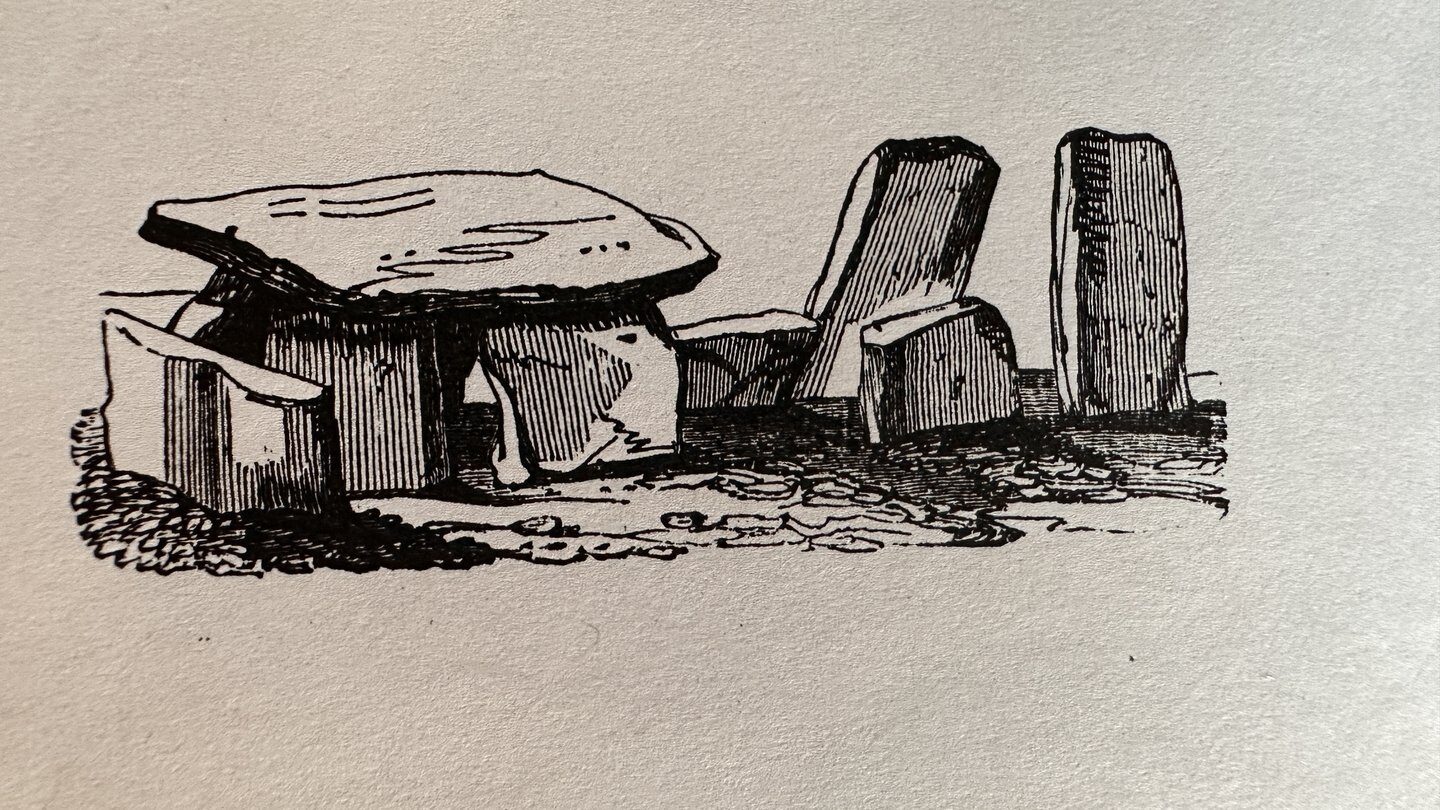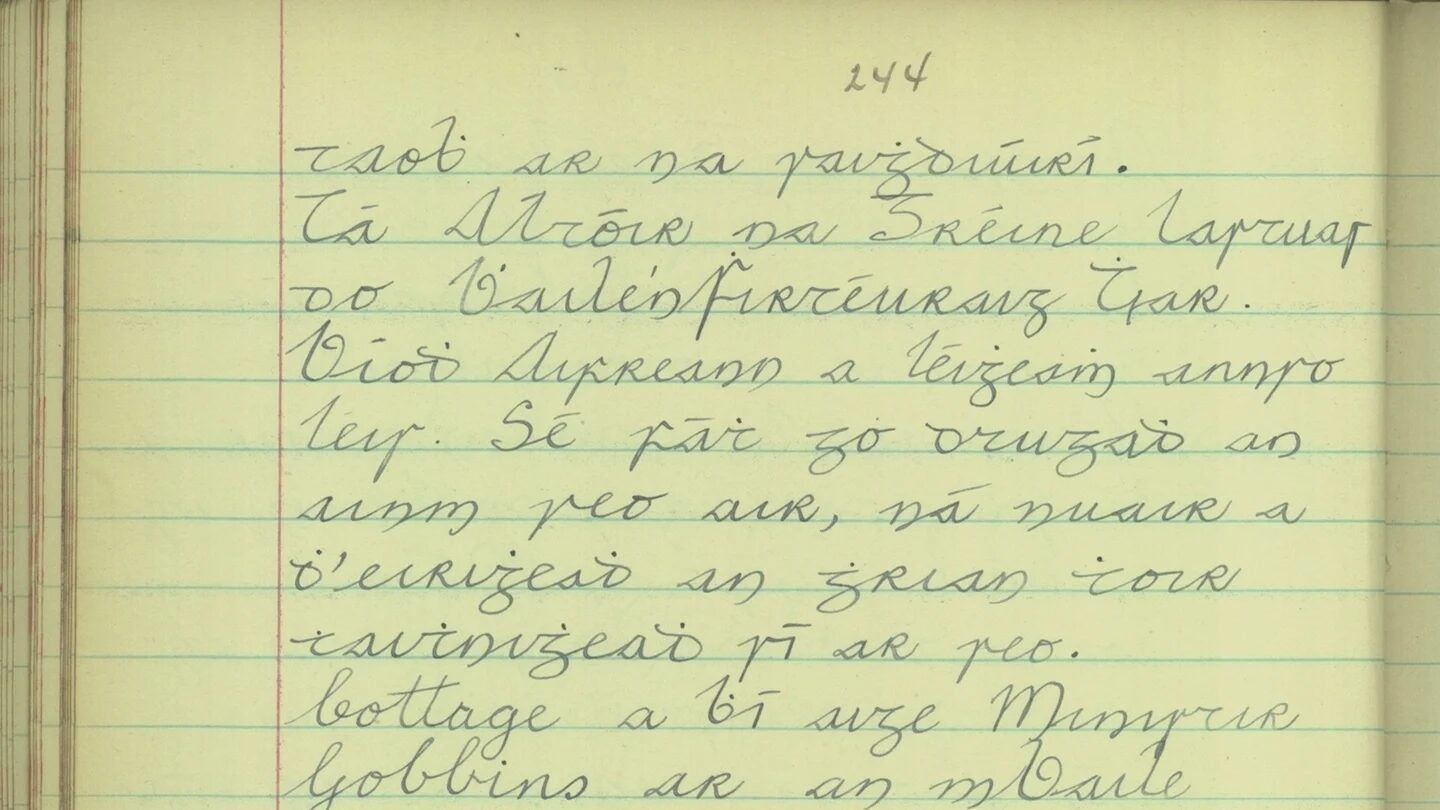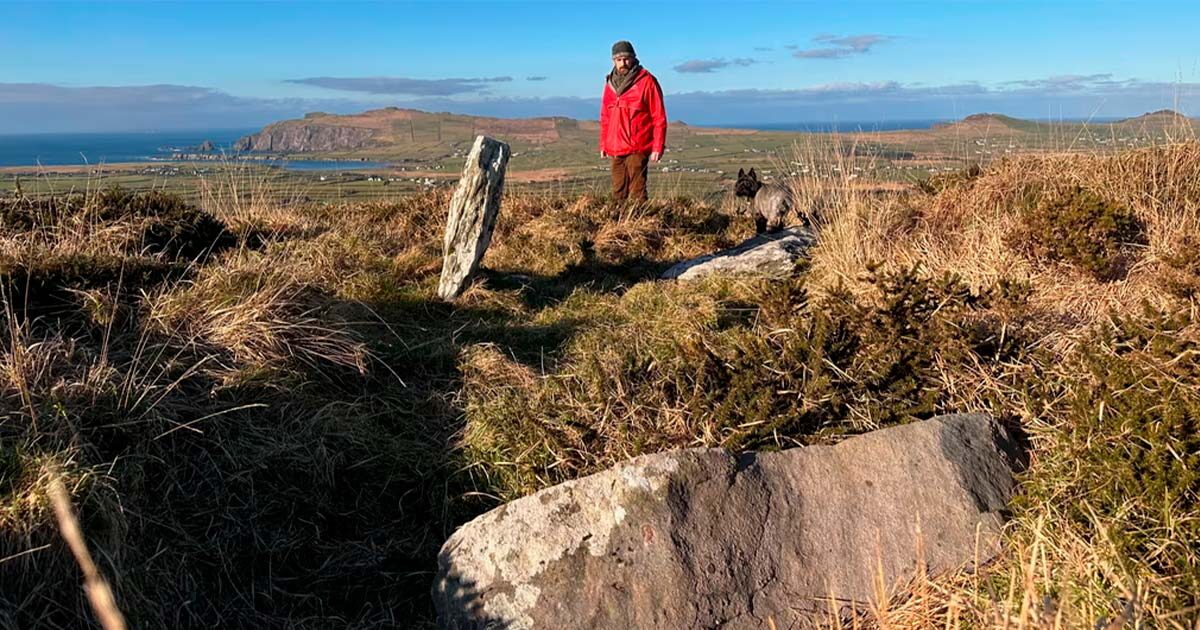The megalithic tomb known locally as Altóir na Gréine (the sun altar) was believed to have been completely destroyed in the 1840s, with its stones broken and carried away for use as building material.
While the existence of a tomb "near" Baile an Fheirtéaraigh is documented in 19th century antiquarian literature, a record of the monument's location did not exist.
An 1838 sketch of the tomb, its reputed association with the sun and its strange disappearance has been a source of intrigue for archaeologists for decades.
However, the 180-year-old mystery has now been solved by local man Billy Mag Fhloinn.
The folklorist has not only found the prehistoric site, but he has also discovered some of the large stones, which had been believed to have been removed, still in situ.
A number of orthostats (large upright stones) have survived, as well as a large capstone, while more may lie under the dense undergrowth.
The monument is situated on the crest of a hill overlooking the village of An Buailtín.

In her travel journal, Ms Chatterton describes climbing the mountain in the company of an elderly priest to find "a curious piece of antiquity once an altar, supposed to have been used for offering sacrifices to the sun".
However, when the antiquarian Richard Hitchcock came to west Kerry to inspect the tomb in 1852 he found the monument no longer existed, "the stones which composed it having been broken and carried away for building purposes, as if there were no others in the neighbourhood".
Mr Mag Fhloinn had long been fascinated by Ms Chatterton's sketch and Altóir na Gréine's association with the sun in local folklore and he set about searching for the "lost" tomb on the slopes of Cruach Mhárthain.
"I knew there was a lost site of Altóir na Gréine on the hill somewhere. So I started to walk the hill in search of it, covering a large area. Eventually, these stones caught my eye. Then when I took a closer look I saw that the features on one of the stones perfectly matched an orthostat in the sketch from 1838," explained Mr Mag Fhloinn.
The monument appears to be a wedge-tomb which dates to the early Bronze Age between 2,500 BC and 2,000 BC.
Wedge-tombs are the most numerous megalithic burial structures found on the Dingle Peninsula.
"They are usually positioned on high ground, but not the highest point. There's often certain alignments associated with them. Quite often the opening tends to look towards the west, or the south, or the southwest," said Mr Mag Fhloinn.
"Usually you will find cremated remains of people inside and they probably represent the burial place of a significant family or community group.
"But they could have been used for other things as well, ceremonies and rituals for example. They may have cosmological and astronomical significance in the case where they are facing the setting sun in the west and southwest."
An archaeologist from the National Monument Service has recently inspected the site and confirmed the nature of the find. The tomb will now be added to the database of national monuments.

"For the first time in over 180 years archaeologists know where the tomb is situated and it will enhance our understanding of wedge-tomb distribution," he added.
The rediscovered tomb of Altóir na Gréine will also form part of a deep-mapping project being carried out on the peninsula by Sacred Heart University.
The US university, which has a campus in Daingean Uí Chúis, is visually recording megalithic tombs on the peninsula and creating 3D models of the tombs using photogrammetry.
Given the placename and its apparent northwest/southeast orientation, archaeologists will also be eager to see if Altóir na Gréine is aligned in any way with the sun.
A 1938 manuscript preserved in the Irish Folklore Collection contains lore which describes the "eastern sun hitting the tomb at sunrise", raising the possibility of a winter solstice alignment.




How much of this is real and how much is conjecture, simply a way to normalize insane passages in the bible we will never know...
says me.